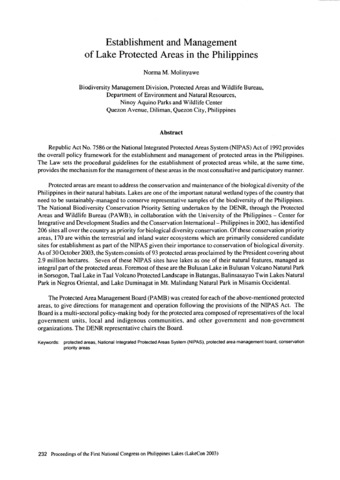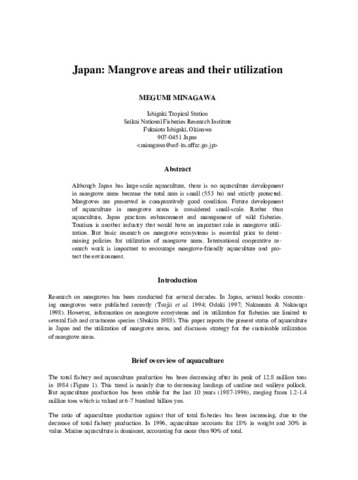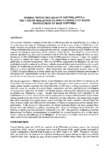Establishment and management of lake protected areas in the Philippines
- Global styles
- MLA
- Vancouver
- Elsevier - Harvard
- APA
- Help
Share
นามธรรม
Republic Act No. 7586 or the National Integrated Protected Areas System (NIPAS) Act of 1992 provides the overall policy framework for the establishment and management of protected areas in the Philippines. The Law sets the procedural guidelines for the establishment of protected areas while, at the same time, provides the mechanism for the management of these areas in the most consultative and participatory manner.
Protected areas are meant to address the conservation and maintenance of the biological diversity of the Philippines in their natural habitats. Lakes are one of the important natural wetland types of the country that need to be sustainably-managed to conserve representative samples of the biodiversity of the Philippines. The National Biodiversity Conservation Priority Setting undertaken by the DENR, through the Protected Areas and Wildlife Bureau (PAWB), in collaboration with the University of the Philippines - Center for Integrative and Development Studies and the Conservation International - Philippines in 2002, has identified 206 sites all over the country as priority for biological diversity conservation. Of these conservation priority areas, 170 are within the terrestrial and inland water ecosystems which are primarily considered candidate sites for establishment as part of the NIPAS given their importance to conservation of biological diversity. As of 30 October 2003, the System consists of 93 protected areas proclaimed by the President covering about 2.9 million hectares. Seven of these NIPAS sites have lakes as one of their natural features, managed as integral part of the protected areas. Foremost of these are the Bulusan Lake in Bulusan Volcano Natural Park in Sorsogon, Taal Lake in Taal Volcano Protected Landscape in Batangas, Balinsasayao Twin Lakes Natural Park in Negros Oriental, and Lake Duminagat in Mt. Malindang Natural Park in Misamis Occidental.
The Protected Area Management Board (PAMB) was created for each of the above-mentioned protected areas, to give directions for management and operation following the provisions of the NIPAS Act. The Board is a multi-sectoral policy-making body for the protected area composed of representatives of the local government units, local and indigenous communities, and other government and non-government organizations. The DENR representative chairs the Board.
Description
Abstract only.
การอ้างอิง
Molinyawe, N. M. (2005). Establishment and management of lake protected areas in the Philippines. In M. L. Cuvin-Aralar, R. S. Punongbayan, A. Santos-Borja, L. V. Castillo, E. V. Manalili, & M. M. Mendoza (Eds.), Proceedings of the First National Congress on Philippine Lakes (p. 232). Southeast Asian Regional Center for Graduate Study and Research in Agriculture (SEARCA).
Type
Conference paperISSN
1656-8099คอลเลกชัน
- LakeCon2003 [49]
Related items
Showing items related by title, author, creator and subject.
-
Using local user perceptions to evaluate outcomes of protected area management in the Sagay Marine Reserve, Philippines
Web, Edward L.; Maliao, Ronald J.; Siar, Susana V. (Cambridge University Press, 2004)Local user perceptions of resource trajectory and indicators of protected area outcomes can be useful in the assessment of integrated conservation projects, both marine and terrestrial. In-depth stakeholder surveys using ... -
Japan: Mangrove areas and their utilization
Minagawa, Megumi (Aquaculture Department, Southeast Asian Fisheries Development Center, 2000)Although Japan has large-scale aquaculture, there is no aquaculture development in mangrove areas because the total area is small (553 ha) and strictly protected. Mangroves are preserved in comparatively good condition. ... -
Marine protected areas in the Philippines: The case of Malalison island in community-based management of reef fisheries
The extensive Philippine coastline of more than 22,540 k m provides the natural habitat of a variety of flora and fauna that make the Philippine archipelago one of the centers of marine biodiversity in the world. Resource-use ...







